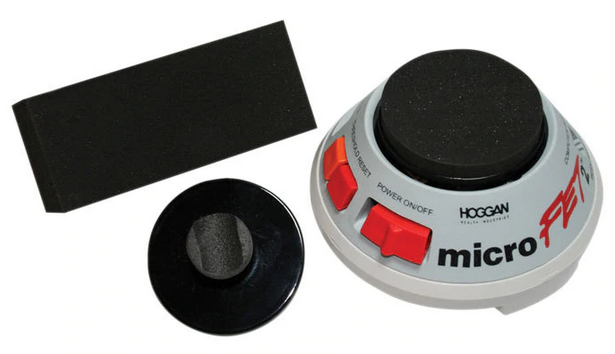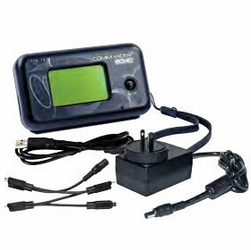 26th Jul 2018
26th Jul 2018
Muscle Strength Testing and Manual Muscle Grades
Muscle strength is a common area evaluated when patient first come to rehabilitation. Most practitioners use manual muscle testing devices like hand held dynamometers to get results for muscle strength. These scores are then graded according to a guide published by the published by the National Institute of Health. These grades provide valuable information to practitioners as to where a patient falls within established norms for functional movement, while providing a valuable tool to keep track of progress as the patient moves forward with rehab.
MMT grades are usually labelled with the following terms: “zero,” “trace,” “poor,” “fair,” “good,” and “normal.” In addition, manual muscle testing grades can be further described using a numerical scale from 0 through 5. To further fine-tune grading, practitioners may also use + or – symbols to fine-tune the grading specific to their patient’s unique testing results.
For all practices and practitioners, it’s important to have a degreed upon protocol for performing manual muscle testing in order to get reliable results across the board. When using MMT grades, 0 is on the low-end of ability while 5 is the higher end of strength ability. For example, when using MMT grades, the Fair or neutral results are considered a 3 if the patient is able to move the tested body part throughout the range of motion, either against gravity and/or has the ability to maintain the testing position. Patients who aren’t able to move through the full range of motion, unless gravity is removed, will score lower on the scale with a “poor” grade or 2. Then for our patients who are unable to move throughout the range of motion, with or without range of motion, would be considered a 0 grade.
Using Manual Muscle Testing Grades
THE MMT Grades Guide
Grade 5 (Normal; 100%): With a grade 5, patients are able to withstand any added pressure within the test position while completing a full range of motion movement against any added gravity (and maximum resistance applied at end-range).
Grade 4 (Good;75%): With a grade 4, patients can only successfully perform the full range of motion during testing with moderate pressure. Grade 4 is usually only given if a patient can perform with moderate-strong pressure on both sides, to ensure enough force was used on the tested limb.
Grade 3+ (Fair+): MMT grade 3+ is not quite middle of the road results. In this grade, a patient is able to perform complete range of motion with the addition of gravity and minimal resistance.
Grade 3 (Fair;50%): Manual muscle testing grade 3 is considered the mid-range for muscle strength. In this grade, the patient can complete the complete range of motion against gravity, however, will be unable to perform the test with any added pressure.
Grade 2+ (Poor +): Grade 2+ is the beginning of strength ranges where there is a marked deficit in strength. There are two sides to this grade. A patient is considered an MMT grade 2+ if they move through 50% or less in range during an anti-gravity position or is only able to maintain the position against resistance, but without gravity.
Grade 2 (Poor;25%): With Grade 2, patients can complete movement in a horizontal plane during muscle testing, however they are unable to complete any type of movement when gravity is applied. However, once gravity and/or resistance is eliminated, they are able to perform the required movement.
Grade 2- (Poor -): With Grade 2-, patients can only move partially in a horizontal plane. The distinction with this grade is that movement can only be performed partially and only when both gravity and resistance has been eliminated.
Grade 1 (Trace): Grade 1 is the last of the manual muscle grades and indicates that there is no visible movement on the tested body part. There may be small contractions upon closer examination and/or palpation, but it will be minimal. In muscle testing, with this grade, patients are unable to move the tested body part at all regardless of the lack of resistance or gravity.
Related Article : Handheld Dynamometer Buying Guide
Superior Tools for Manual Muscle Testing
MicroFET 2: For practices looking for an advanced, reliable hand held dynamometer, they need to look no further than the MicroFET 2. The MicroFET 2 has the distinction of being one of the most popular manual muscle testing devices on the market today. Some of the benefits of using the MicroFET 2, include:
- Ergonomically designed to fit easily in practitioner’s hand
- Easy to set up and use
- Digital display for simple to read results
- Completely wireless
The benefits of the JTech MMT dynamometer alone, include:
- Practitioners can create completely customized testing protocols
- Features a pop-in "quick connect" system which makes changing test pads fast and simple
- Easily identifies bilateral strength differences
Also, practices have the option of using the JTech Commander Echo Console with corresponding JTech Commander Echo Downloader software which helps practitioners easily collect patient date from manual muscle testing. What’s more, practitioners can create full-color reports to easily analyze results and identify weaknesses and patterns of progress. Couple the software with the complete line of muscle testing devices which can be used as part of the modular JTech Commander Echo console, this is a truly advanced piece of equipment that is perfect for the growing practice.
Contact Us Today
We can help your practice find the right manual muscle testing device for your patients. Contact us today and we’ll answer any questions you may have about manual muscle testing and hand held dynamometers! Call us today at 1-801-770-3328 for more information.









